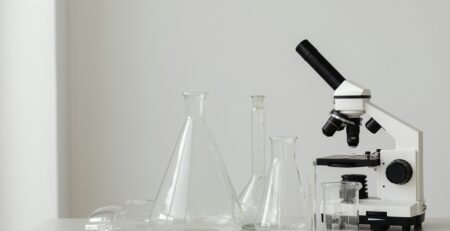4
Sep
Glass Beakers vs Plastic Beakers: Accuracy, Safety, and Sustainability
Beakers are one of the most widely used pieces of laboratory glassware. Available in both glass and plastic, each type serves different purposes in education, research, and industry. For Australian laboratories, choosing between borosilicate glass beakers and plastic alternatives often comes down to balancing accuracy, safety, and sustainability.
Glass Beakers: Precision and Durability
High-quality glass beakers are made from BORO 3.3 borosilicate glass, ensuring compliance with ISO and ASTM standards.
- Heat resistant, suitable for direct heating and autoclaving.
- Chemically durable, withstanding acids, alkalis, and organic solvents.
- Provide better accuracy in graduations compared to plastic equivalents.
- Reusable and sustainable, supporting long-term laboratory practices.
Glass beakers are ideal for analytical chemistry, microbiology, and any laboratory requiring precision and durability.
Plastic Beakers: Convenience and Cost-Effectiveness
Plastic beakers, commonly made from polypropylene (PP) or polymethylpentene (PMP), offer advantages where glass may not be practical.
- Lightweight and shatterproof, reducing breakage risks in schools and fieldwork.
- Resistant to many chemicals but less suitable for strong solvents or high heat.
- Cost-effective for high-volume or disposable use.
- Useful in educational labs and general handling tasks where accuracy is less critical.
While plastic beakers offer convenience, they are less sustainable due to shorter lifespans and higher replacement rates.
Comparison Table: Glass vs Plastic Beakers
| Feature | Glass Beakers (BORO 3.3) | Plastic Beakers (PP/PMP) |
|---|---|---|
| Heat Resistance | Excellent, direct flame and autoclaving | Limited, may warp or melt at high heat |
| Chemical Resistance | Very high, suitable for most reagents | Moderate, some solvents may cause damage |
| Accuracy | High, precise graduations | Lower, graduations less reliable |
| Durability | Fragile if dropped, but long lifespan | Shatterproof, shorter lifespan |
| Sustainability | Reusable, reduces waste | Often disposable, less eco-friendly |
| Best Applications | Analytical labs, QC, advanced research | Schools, routine tasks, fieldwork |
FAQs
Q1: Are glass beakers always better than plastic?
Not always. Glass is superior for precision and heating, but plastic is safer in classrooms and fieldwork where breakage is a concern.
Q2: Can plastic beakers be autoclaved?
Some polypropylene beakers are autoclavable, but repeated sterilisation shortens their lifespan compared to borosilicate glass.
Q3: Are glass beakers sustainable?
Yes. BORO 3.3 beakers can be reused for years, reducing reliance on disposable plastics.
Q4: Which type is more cost-effective long term?
Glass beakers cost more upfront but last much longer. Plastic beakers are cheaper initially but need frequent replacement.
References
- ISO 3819: Laboratory Glassware — Beakers.
- ASTM E960: Standard Specification for Laboratory Glassware Beakers.
- ISO 3585: Borosilicate Glass 3.3 — Properties and Standards.
- Green Labs Australia: Reducing Plastic Waste in Science.
- University of Sydney Chemistry Laboratory Guidelines.

